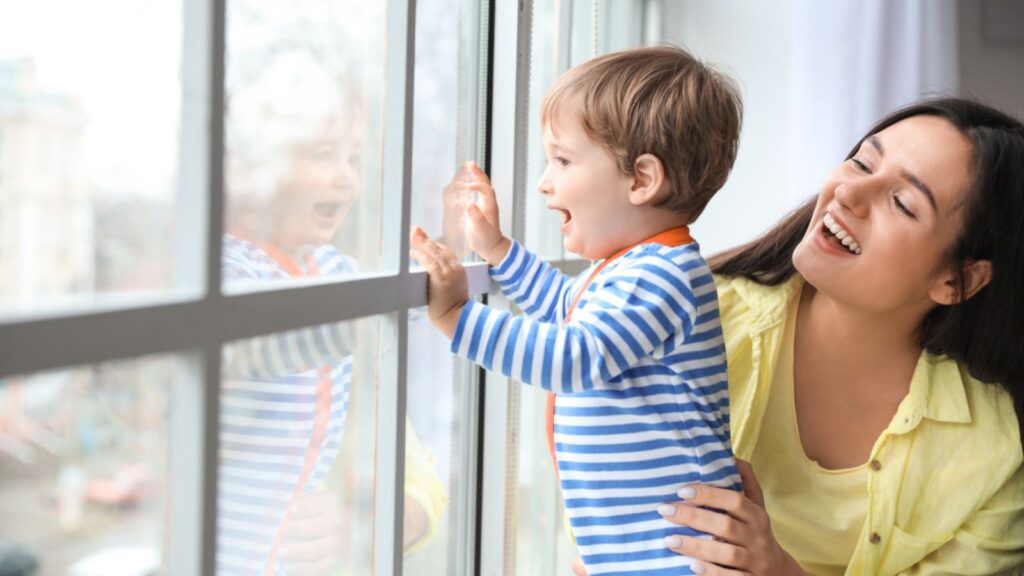16 Dangers at Home to Be Aware Of and Keep Kids Safe
This post may contain affiliate links. As an Amazon Associate, I earn from qualifying purchases.
Home is not just where the WiFi connects automatically; it should also be the place that guarantees safety, especially for children. Ensuring your home is a safe haven for your children is a top priority for all parents. Keeping children safe may feel like you’re trying to fry popcorn in an open pot; sometimes, children keep inventing newer ways to harm themselves.
With numerous hidden dangers lurking within the walls of our homes, parents, caregivers, and homeowners must be aware and take proactive measures. This doesn’t mean you have to wrap your child in bubble wrap or build a fortress around your home; being aware and taking necessary precautions can significantly reduce the risks.
You can’t protect them from what you don’t know. Here are some common dangers at home that parents must be aware of and ways to keep kids safe.
1. Unsecured Windows

Unsecured windows pose a significant risk, especially in multi-story homes. Children are naturally curious and may lean out of open windows, leading to potential falls.
To prevent this, install window guards or stops to limit how far windows can open. Educate children on window safety and the dangers of leaning or playing near windows. Regularly check that windows are properly secured and functioning.
2. Choking Hazards

Small items like toys, coins, and certain foods can be choking hazards for young children. It’s essential to keep these items out of reach and sight. It takes just a fraction of a second for a child to put something in their mouth that can potentially choke them.
Store small items in locked cabinets or high shelves. Cut food such as grapes and meat into small bites and always supervise meal times. Additionally, older children should be educated about the risks of leaving small objects within reach of younger siblings.
3. Poisonous Substances (Chemicals, Cabinets, Medications)

Household chemicals, cleaning agents, and medications can be extremely dangerous if ingested by children. They should always be stored securely. Some children are drawn to medication, like moths to light.
Use child-resistant locks on cabinets containing harmful substances. Keep chemicals and medicines in their original containers and out of reach. Always supervise children when using or are around potentially toxic substances.
4. Gun Safety

The jury on gun ownership and safety is still out, but having guns in the home requires strict safety measures to prevent accidental injuries or worse. Guns may fascinate kids, and they could view them as toys.
If you choose to own a gun, store it unloaded in a locked cabinet or safe. Ammunition should be stored separately. Educate children on the dangers of guns and never play with or touch a firearm without adult supervision.
5. Internet Safety

In today’s digital age, internet safety is paramount. Children can easily access inappropriate content or be targeted by online predators. Interactive games, social media sites, and chat rooms can also pose risks.
Set parental controls on devices and monitor your child’s internet activity. Educate them about safe online behavior and the dangers of sharing personal information with strangers. Encourage open communication about any concerns or issues they may have encountered online.
6. Fire and Burns

An open fire is beautiful, but some kids may not know that it’s also dangerous. Fires and burns are common household hazards. Taking preventive steps can significantly reduce the risk of accidents. Keep matches, lighters, and lit candles out of reach of children. Supervise them around stoves, ovens, and other hot appliances.
Install smoke detectors in every room and regularly check that they are functioning. Have a fire extinguisher readily available and teach children how to use it. Create a fire escape plan and practice it with your family.
7. Drowning Risks

Even small amounts of water can pose a drowning risk to young children. Bathrooms and swimming pools are common danger zones. Buckets full of water can also be hazardous, especially to infants.
Empty buckets or containers of water after use, and always have a locked fence around pools. Teach children how to swim as early as possible, but still actively monitor them when they are swimming.
8. Sockets and Electric Wires

Electrical outlets and cords can be tempting for curious little hands, leading to potential shocks or burns. They may also try to stick objects into outlets, which can be dangerous.
Cover exposed wires with tape or invest in cord organizers to prevent children from pulling on them. Keep cords out of reach and secure them to prevent tripping hazards. Inspect electrical appliances for frayed cords and repair or replace them as needed.
9. Furniture Tip-Over

Heavy furniture like bookshelves and dressers can tip over if children climb on them, causing serious injuries. A child will always lean on things or try to climb them; it’s their nature.
Anchor heavy furniture to the wall to prevent tip-overs. Choose furniture with wide bases and avoid placing tempting items like toys or remote controls on top of tall furniture. Teach children not to climb on furniture (and hope they hear you).
10. Sharp Objects

Knives, scissors, and other sharp objects should always be kept out of children’s reach to prevent cuts and injuries. Even seemingly harmless items like paper clips and thumbtacks can cause harm if mishandled.
Store sharp objects in secure cabinets or drawers. Use safety scissors for young children and supervise them while using them. Regularly check for any sharp objects that may have fallen on the floor or are within reach of curious hands.
11. Toxic Plants

All plant parents must know their plants really well. Certain household plants can be toxic if ingested by children, such as Azaleas. It’s important to know which plants are harmful and keep them out of reach.
Research and identify toxic plants in your home and replace them with non-toxic alternatives. Plants should be placed out of reach or in rooms children cannot access. Educate children about the dangers of eating or touching unknown plants.
12. Suffocation Hazards

Items like plastic bags, bedding, and soft toys can pose suffocation risks to young children. Too much heavy bedding or tightly wrapped blankets can also be unsafe.
Avoid placing plastic bags within reach of children. Always put babies to sleep on their backs and remove any potential suffocation hazards from cribs. Keep soft toys out of cribs until the child is at least one year old.
13. Stair Safety

Stairs can be a significant fall hazard, especially for young children who are still learning to walk. They will want to experiment with climbing up and down, but it’s essential to keep them safe.
Install baby gates at the top and bottom of the stairs. Teach children how to use stairs safely: facing forward, holding onto the handrail, and taking one step at a time (or if younger, on their bellies and feet first). Always supervise them when they are using the stairs until you are confident in their abilities. Ensure that stairs are well-lit and free of clutter.
14. Allergens and Asthma Triggers

Dust, pet dander, and mold can trigger allergies and asthma in children, affecting their health and well-being. It’s important to reduce exposure to these triggers and create a safe and healthy environment for children.
Regularly vacuum and dust your home, especially in areas where children spend the most time. Keep pets out of bedrooms and wash their bedding regularly. Use hypoallergenic bedding and consider investing in an air purifier to improve indoor air quality. Consult with your child’s doctor if they have allergies or asthma to determine the best course of action.
15. Emotional and Physical Abuse

Emotional and physical abuse can have severe and lasting impacts on a child’s mental and physical well-being. And it can come from the most unexpected places (schools, extended family, etc.). It’s essential to recognize the signs of abuse, such as unexplained injuries, behavioral changes, or withdrawal.
Create a safe and open environment where children feel comfortable discussing their feelings and experiences. Educate yourself and others on the resources available for support and intervention, including hotlines, counseling services, and legal protections. Prioritize fostering a nurturing and loving environment to promote healthy development and well-being.
16. Risk of Home Invasions

Alarming data shows that home burglaries happen every 25 seconds. Home invasions present a critical risk and can have severe consequences for the safety and well-being of your family.
To mitigate the risk of home invasions, ensure that all doors and windows are securely locked, especially when not at home or at night. Consider installing a robust home security system and reinforcing entry points with deadbolt locks and security bars. Educate family members on the importance of not opening the door to strangers and having a safety plan in the event of an intrusion.
20 Strong Words Parents Should Never Say to Their Kids

Countless adults sitting in a therapist’s office today are grappling with the lasting impact of words spoken by their parents during childhood. Regardless of how you perceive yourself, in your child’s eyes, you are nothing short of the most remarkable thing to happen to them since “skip intro.” This underscores the critical importance of being mindful of what you say to your children, as your words become the small but influential voice in their developing minds.
20 Strong Words Parents Should Never Say to Their Kids
16 Common Phrases Grandparents Should Stop Saying to Their Grandkids

Do you still remember something your grandparents said that made you uncomfortable? As much as we adore our grandparents, their words (even with good intentions) can sometimes hurt our feelings or are plain embarrassing.
If you are a grandparent, using your words mindfully around your grandkids is as crucial as any other relationship. Words hold immense power and shape our kids’ behaviors and perceptions.
16 Common Phrases Grandparents Should Stop Saying to Their Grandkids







